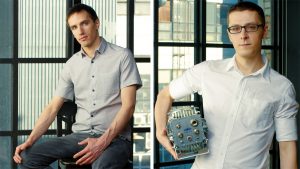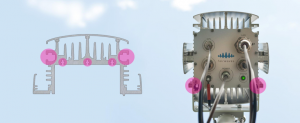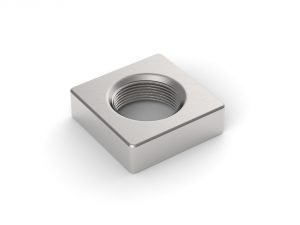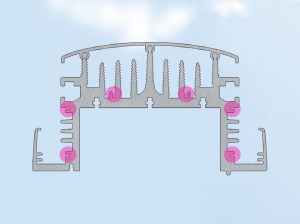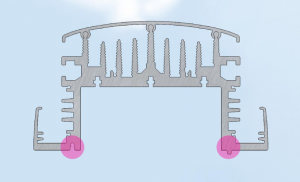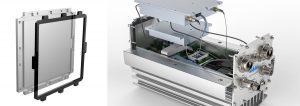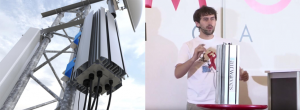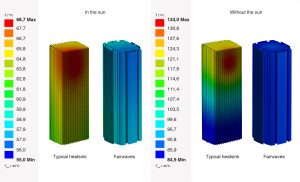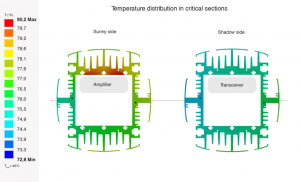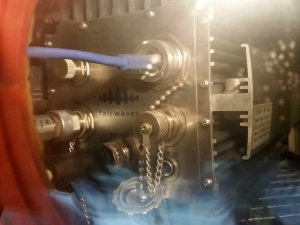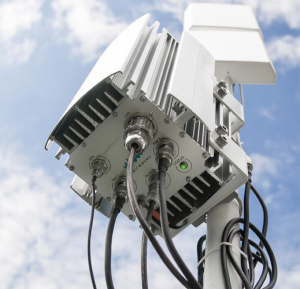The Fairwaves UmSITE series is unique both in functionality and the way it looks. This is not an accident. Being Russians we borrowed a lot of the design principles from the AK-47.
UmSITE-TM3, a GSM base station, has been installed all over the world after its release one year ago and are now present on five continents (Australia, North and South Americas, Africa, and Eurasia). The installed equipment works flawlessly, despite difficult climatic conditions, such as very hot climate and high humidity.
One of the reasons for its flawless workmanship is its robust case, designed together with the Objectlab team from Moscow. We needed to make a very cheap and reliable, scalable solution. Though we are actually pacifists, we managed to create a kind of AK-47 for the telecom world.
At the beginning of 2013, we understood that there was no suitable ready-made solution for our needs on the market. All base station components need to be placed in a compact and lightweight case which would be easy to use, have a low cost, and most importantly, can operate without maintenance in conditions of high density and humidity in a temperature ranging from -40 to 55 °C under direct sunlight.
Luckily, we met the team of industrial designers from Objectlab just in time. Working with Objectlab proved an exciting adventure, which we would like to now discuss with the founders of the company, Mikhail Oleynikov and Sergey Shlyakhov.
How did you design the UmSITE-TM3 base station case?
From the very beginning, we chose an extruded profile as the case base. It is not a traditional solution for telecom equipment – as molded cases are usually preferred – however, molded cases do not allow flexibility in equipment changes and require relatively high capital investment in tooling. On the other hand, the tooling costs for the extrusion of aluminum is only a few thousand dollars. It allowed us to create an interesting design that would otherwise not have been allowed in our casting.
The best part of the extruded elements is that they do not require machining, besides cutting to the desired length and drilling holes for the tightening of half-shells. All other fasteners are made directly in the extrusion process. We use adapter plates for mounting radio equipment, but the cost of production is much lower than say the cost of a case element ruined due to a torn thread.
Extrusion allows us to make grooves and undercuts in detail. To attach any parts to the case, we use a pair of screw-square nuts, which are put into a slot and locked in it with one of its faces.
There are circular grooves in the entire length outside of the case, which are intended for the tightening of screws and securing the end caps to the case, therein. It is possible to either pre-cut grooves in the thread or use self-tapping screws (for example DIN 7500), but they need to be tightened carefully, so as not to disrupt the head.
For contracting the half-shells together, we use an Allen screw and our favorite square nut, DIN 562. The nut is locked by protruding ribs.
It should be noted that the case is assembled from two identical halves. Sealing the joints between the halves is provided with silicone cords which fit into grooves. The shape of the grooves allows the cords to be gripped, thus preventing them from falling out, which is very nice for the overall assembly. During assembly, the cord is pushed against the secondary half shell, located on the opposite side of the case.
Sealing of the station from the end is provided with silicone gaskets, lying in the end cap.
An article on the results of the test for leaks: https://fairwaves.co/blog/first-umsite-tm3-sample-passes-leak-test/.
The heat sink is directly dependent on the surface area. Thanks to the wave shape of the cooling fins, we increased the heat transfer area from the respective ribs by 20%, thereby reducing the weight and size of the radiator, and at the same efficiency level. Besides, it is just beautiful! As for protection from the sun, we wanted to use a lid integrally formed with the case, and the first prototype had such a lid:
Then we gave up from the realization that it turned out to be impossible to manufacture the enclosure in a mass-production environment. Currently, the lid and the case are made as separate parts and then assembled into a single part:
The whole geometry of the station is due to the following things: the most compact layout of internal components, with a uniform heat generation on both halves of the case, and thermal calculations.
We took into consideration the standard profiles which used a similar internal volume available on the market. They have a thermal resistance of 1-1.5 °C / W, and require the use of external visors for protection against the sunlight.
The thermal resistance of the developed radiator is -0.7 °C / W.
The correctness of the thermal calculation was confirmed by thermal tests in the laboratory and actual installations.
More results of thermal testing: https://fairwaves.co/blog/umsite-passes-temperature-tests-with-flying-colours/.
The technical solutions described above are not obvious, but as noted by consumers, this is a unique design, emphasizing Fairwaves’ base station as compared to other manufacturers of telecommunications equipment.

